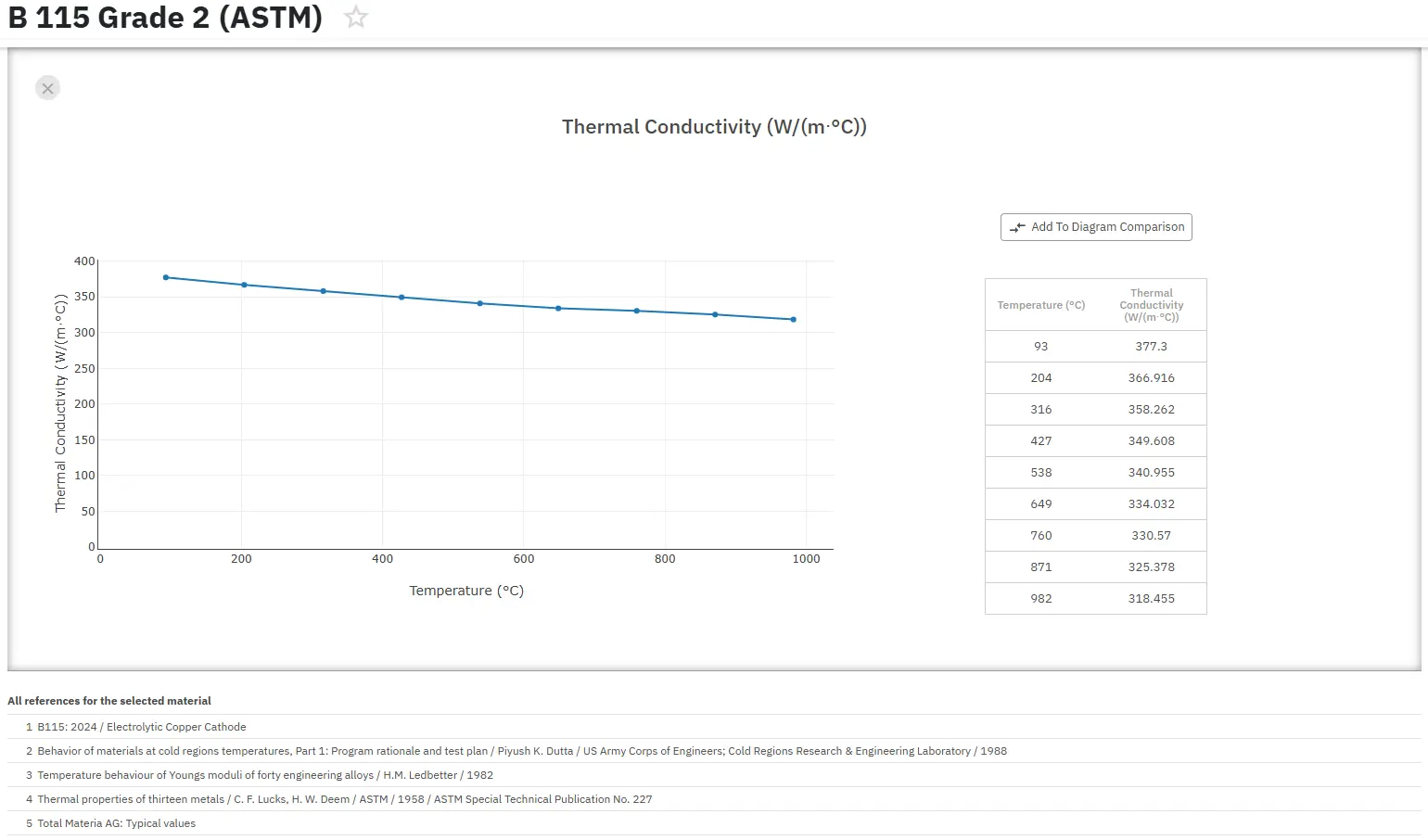Copper Spinodal Alloys: Part One
Abstract
Ternary copper-nickel-tin (CuNiSn) spinodal alloys have recently been developed to deliver larger sizes and engineered shapes with a combination of high strength, excellent tribological characteristics, and high corrosion resistance in seawater and acid environments.
A three-fold increase in the yield strength over the base metal results from spinodal decomposition in the copper-nickel-tin alloys.
Ternary copper-nickel-tin (CuNiSn) spinodal alloys have recently been developed to deliver larger sizes and engineered shapes with a combination of high strength, excellent tribological characteristics, and high corrosion resistance in seawater and acid environments.
Until now, spinodal copper alloys have been commercially available only in thin sections and with limited temper options. However, a new generation of spinodal alloys known as Tough Met and Mold Max XL, have been developed through application of a new processing technology to meet the demand for a wide range of thermal management and structural applications.
A small family of highly specialized alloys, called copper-based spinodal alloys, have been developed in an art remote to into either bearings or especially roller cone rock bits, and have been discovered to possess specific physical properties advantageous to the production of rock bit friction bearings.
Spinodal alloys, in most cases, exhibit an anomaly in their phase diagram called a miscibility gap. Within the very narrow temperature range of the gap, atomic ordering takes place within the existing crystal lattice structure. The resulting two-phase structure is stable at temperatures significantly below the gap.
A cast or wrought material is first solution heat treated, permitting partial or full homogenization and annealing of the material, followed by a high-speed quench to freeze the fine grain structure. Subsequently, the material is then age-hardened by raising the material to a temperature within the miscibility gap. A chemical segregation takes place called "spinodal decomposition" wherein two new phases form, of similar crystallographic structure but of different composition.
Copper alloys have very high electrical and thermal conductivity compared with conventional high-performance ferrous, nickel, and titanium alloys. Conventional copper alloys are typically very soft compared with these systems, and are therefore seldom considered for demanding applications. However, the CuNiSn spinodal alloys combine high hardness and conductivity in both its hardened cast and wrought condition.
Furthermore, thermal conductivity is three to five times that of conventional ferrous (tool steel) alloys, which increases heat removal rates while fostering reduction of distortion by dissipating heat more uniformly. Equally important is the superior machinability at similar hardnesses, which is five to nine times that of a conventional tool steel. These properties make the alloys ideal for molds designed for casting plastics.
Copper-nickel-tin spinodal alloys, hereafter abbreviated as Cu--Ni--Sn type spinodal alloys, were developed by Bell Telephone Laboratories to provide a material of unusually high strength, simultaneously with a material which for many years could resist corrosion and erosion in a marine or submarine environment.
Most copper-base alloys develop high strength from solid solution hardening, cold working, precipitation hardening, or by a combination of these strengthening mechanisms. However, in the ternary copper-nickel-tin alloys, high mechanical strength is produced by a controlled thermal treatment called spinodal decomposition (Table 1). These alloys include Cu-9Ni-6Sn (Brush MoldMax XL) and Cu-15Ni-8Sn (ToughMet 3).
Table 1: Mechanical properties of ToughMet spinodal alloys
| Alloy | Description | Yield Strength Rp0,2 MPa (ksi) |
TensileStrength Rm MPa (ksi) |
Elengation % | Rockwell hardness |
| UNSC727001 MoldMax XL |
Cast and Spinodally hardenned | 486-690 (70-100) |
562-758 (80-110) |
10-5 | HRc 20-30 |
| UNSC727001 ToughMet3CX |
Cast and Spinodally hardenned | 207-758 (30-110) |
448-827 (65-120) |
45-2 | HRB 62-HRc 32 |
| UNSC727001 ToughMet3AT |
Cast and Spinodally hardenned | 241-827 (35-120) |
482-930 (70-135) |
35-4 | HRB 60-HRc 32 |
Spinodal structures are fine, homogeneous two-phase mixtures that are produced when the original phases are separated under certain conditions of temperature and composition, such as in a supersaturated solid solution of metals whose atoms are similar in size. In spinodal decomposition, the original phases spontaneously decompose into other phases in which the crystal structure stays the same, but the atoms in the crystals are different.
Because the atoms are similar in size, the heat-treated spinodal structure retains the same geometry as the original, and parts do not distort during heat treatment.
Spinodal decomposition is possible when the various metal atoms in the alloy are nearly the same size and can form a completely homogeneous solid solution. The word "spinode" comes from the Greek "cusp," and was used by 19th century mathematicians to describe functions that exhibit continuous curves, but discontinuous derivatives.
Using thermodynamic principles, van der Waals was able to explain the presence of a "horizontal cusp" in entropy-versus-volume curves for fluids, and he identified spina in other systems as well. J. Willard Gibbs, the noted thermodynamicist, used the model of free-energy vs. composition diagrams to rationalize the limits of phase metastability in ceramics and alloys, and he described the transformation as spinodal decomposition.
A three-fold increase in the yield strength over the base metal results from spinodal decomposition in the copper-nickel-tin alloys. The high strength of the copper-nickel-tin alloys resulting from spinodal decomposition has been attributed to the coherency strains produced by the uniform dispersions of tin-rich phases in the copper matrix.
Read more
Access Precise Properties of Copper Alloys Now!
Total Materia Horizon contains property information for 30,000+ copper alloys: composition, mechanical, physical and electrical properties, nonlinear properties and much more.

Get a FREE test account at Total Materia Horizon and join a community of over 500,000 users from more than 120 countries.